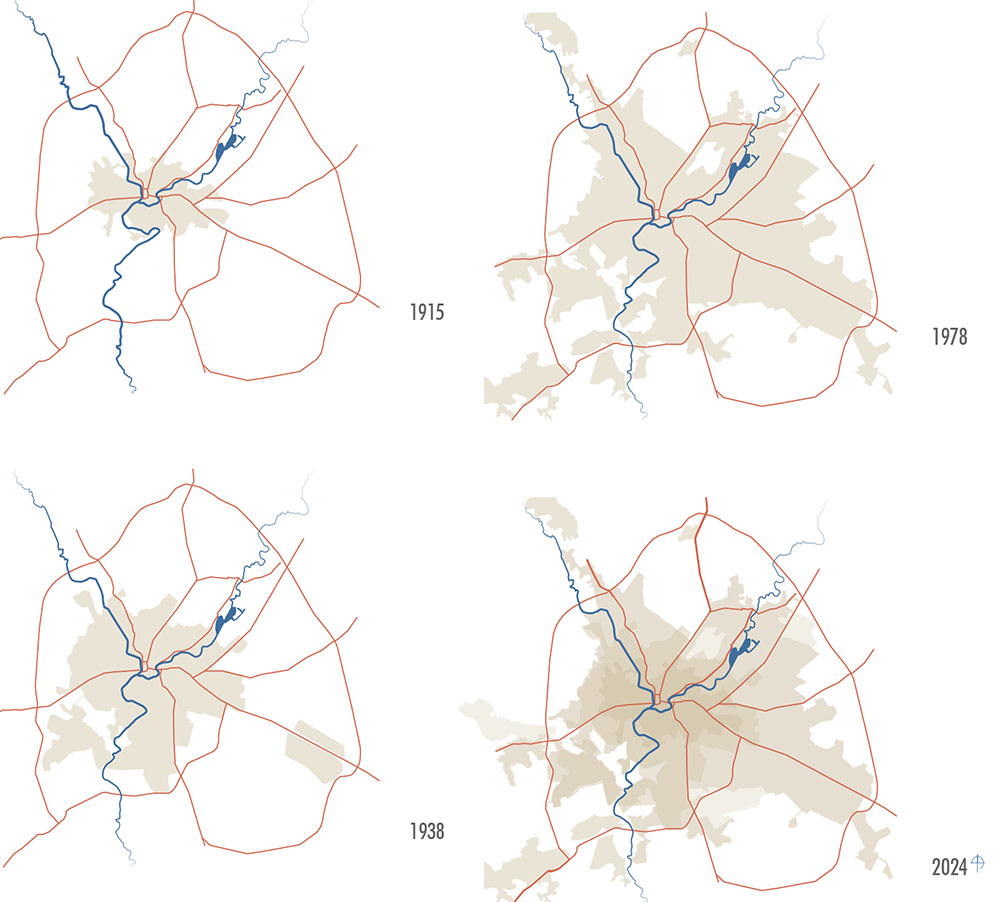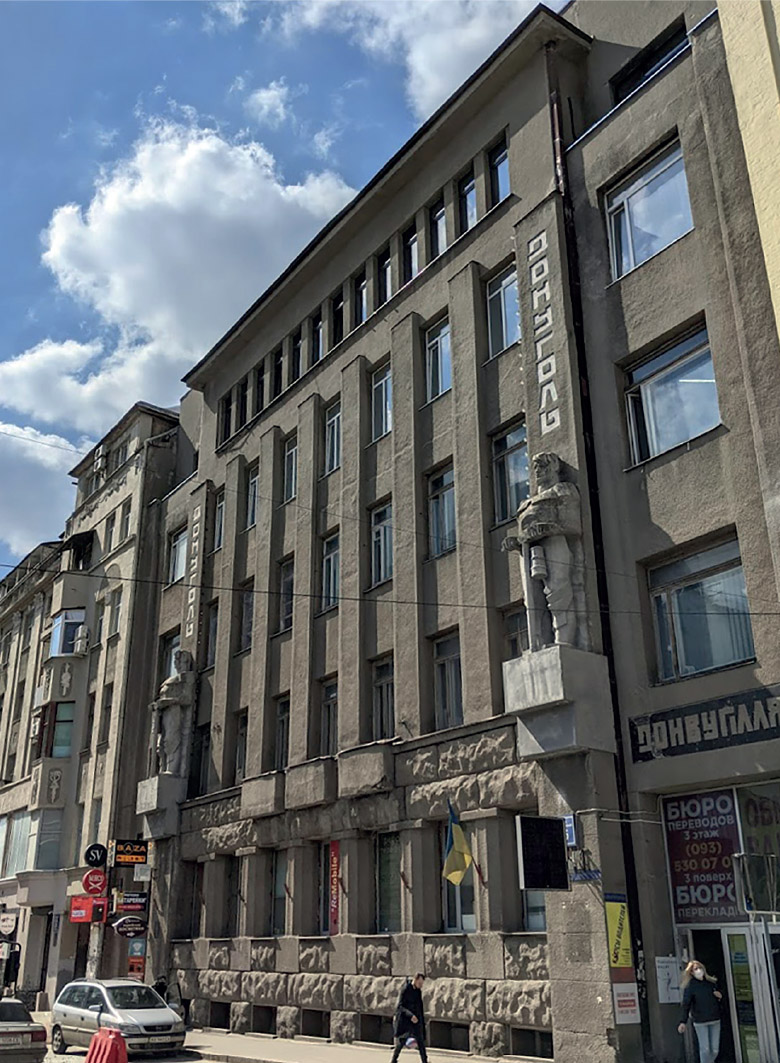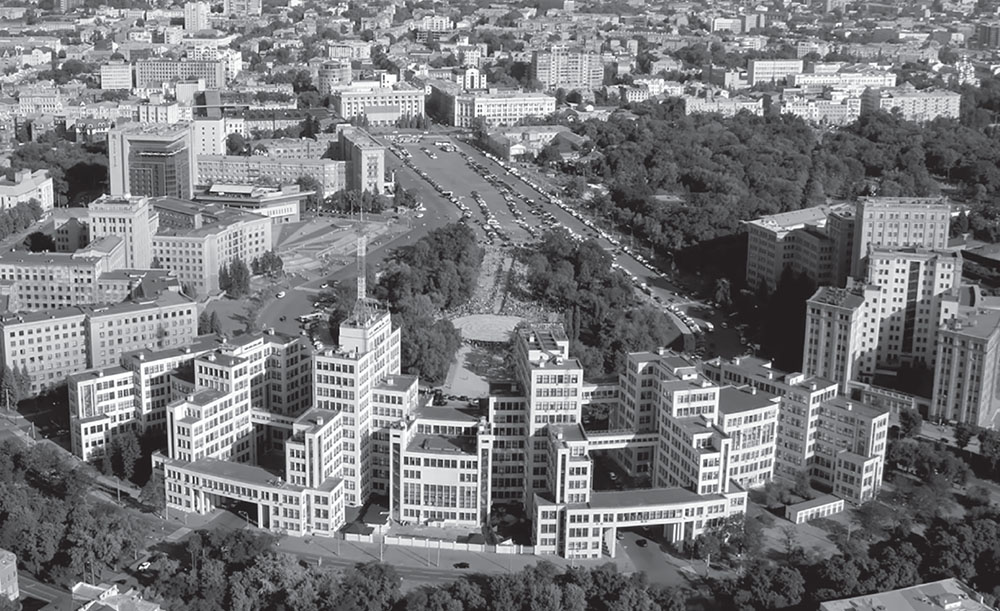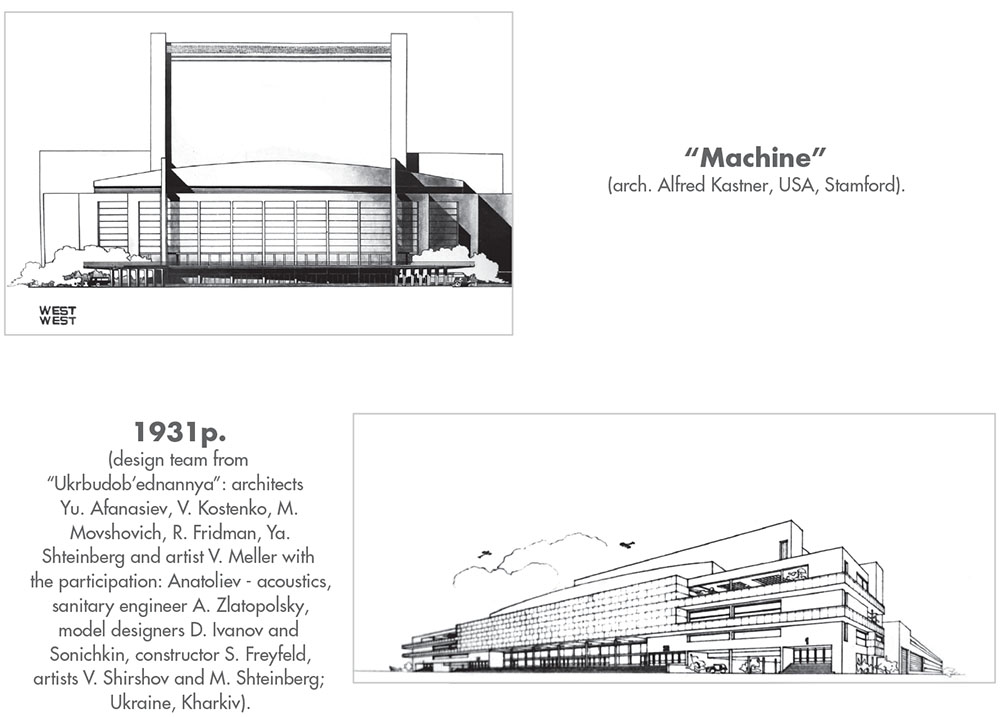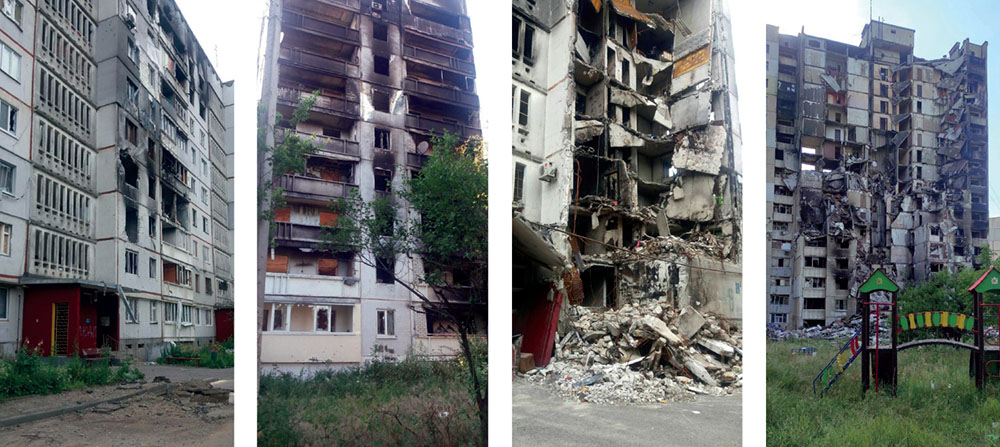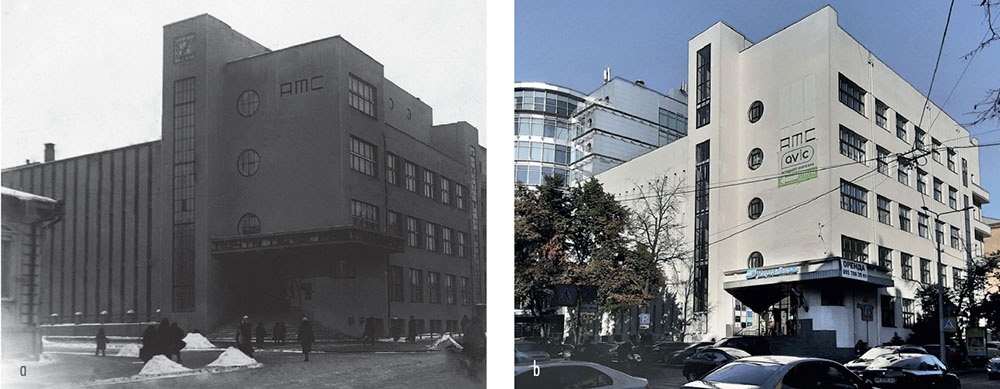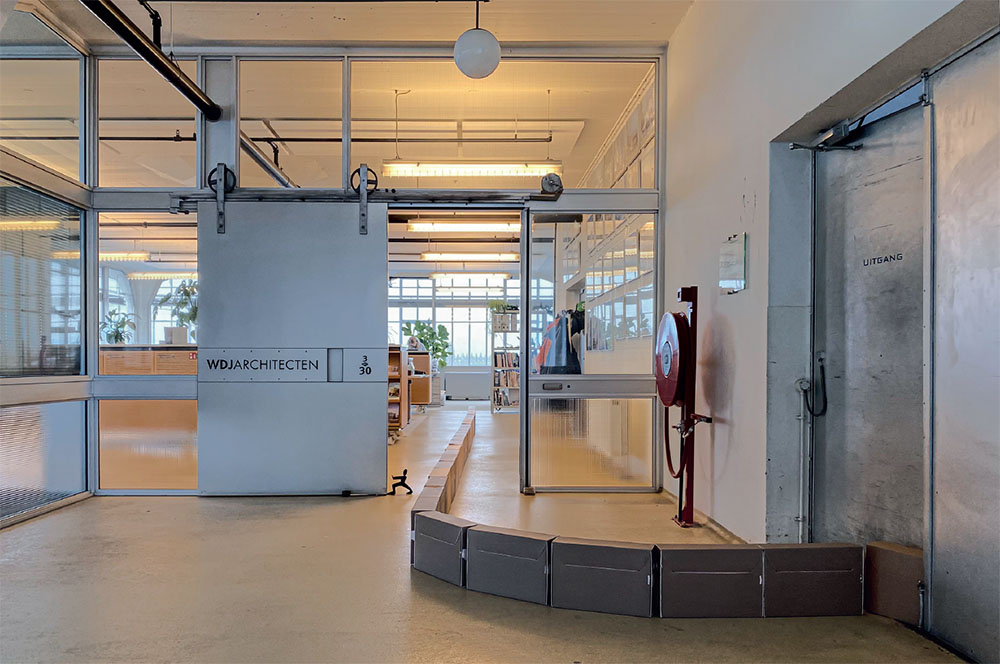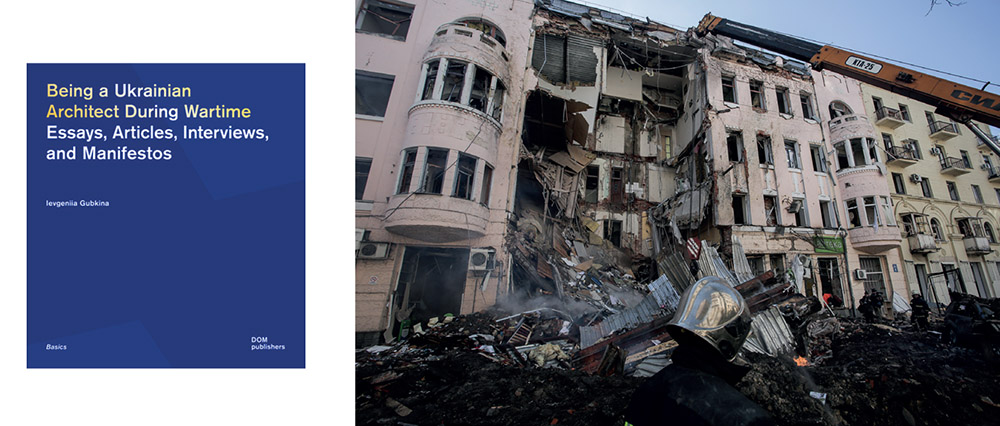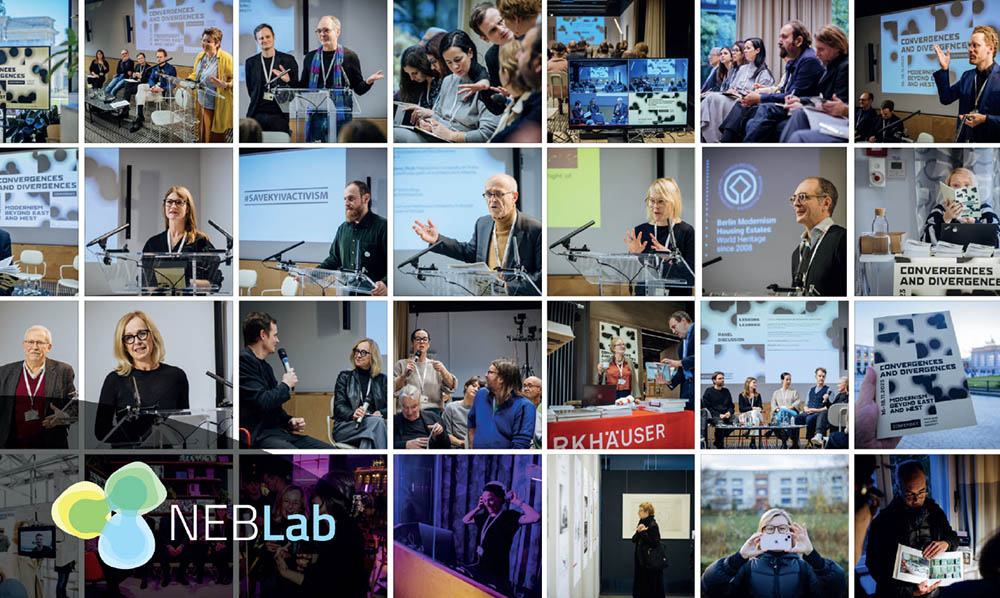
In 2022, Docomomo International launched a call for papers on Modern Movement in Ukraine together with Docomomo Ukraine. More than 20 proposals were received, most of them from authors based in Ukraine itself—despite the difficult circumstances. The Docomomo Journal 67 presented a first selection of those articles to display regional and architectural particularities and current challenges of archiving, documenting, protecting, and preserving the modern heritage.
This Docomomo Journal 70 continues with Modernism in Kharkiv. The modern Ukranian architecture was
dominated by Constructivism from the mid-1920s to the early 1930s, with Kharkiv as the epicenter of production, while Socialist Realism with the Stalin Empire emerged from 1932, lasting until 1955, with Kyiv as the capital of Ukraine. From December 1919 to January 1934, Kharkiv was the first capital of the Ukrainian Soviet Socialist Republic and the cultural, economic, and educational center of the new Ukrainian Republic. The status as new capital led to prestigious master plans and construction projects.
Editorial
-
In 2022, Docomomo International launched a call for papers on Modern Movement in Ukraine together with Docomomo Ukraine. More than 20 proposals were received, most of them from authors based in Ukraine itself—despite the difficult circumstances. The Docomomo Journal 67 presented a first selection of those articles to display regional and architectural particularities and current challenges of archiving, documenting, protecting, and preserving the modern heritage. Nearly 100 examples of Ukrainian modern buildings were presented in a graphical overview. The modern Ukranian architecture was...
Essays
-
Documenting and demonstrating (based on material from archives and literary primary sources) the extraordinary growth and development of Kharkiv in the interwar period with an emphasis on the time when it became the first capital of Soviet Ukraine is the main goal of this article. The ideas of modernism were vividly embodied in the architecture and urbanism of the city in the 1920s and early 1930s. Large-scale urban transformations turned it into one of the largest and most significant industrial, cultural, scientific and educational centers of the USSR in a very short period. It became...
-
The ideologists of Constructivism and “production art” of the 1920s put forward the slogan “not style, but method!”. However, the Constructivists-“productionists” movement carried a stylistic charge of great power. The intentions of the Constructivists-“productionists”, their manifestos and slogans are polemically pointed evidence of their awareness of their own place in the Soviet culture of the 1920s. Creative practice continued the development of a certain artistic tradition. It is necessary to reconstruct the development of the problem of style in the concept of “productionists” as a...
-
This paper explores the composition logic of the creativity of the Avant-garde masters and to identify the principles of the composition language of the architecture of modernism.
To characterize the composition language of Avant-garde architecture, systemic, historical-genetic and semiotic methods of research are used. Architectural composition is interpreted as an activity that has its own semantic, morphological and syntactic features. In the example of Svoboda Square (the former Dzerzhinsky Square) in Kharkiv, the logical methods of artistic activity and thinking of the... -
Since February 24, 2022, the architectural heritage of Ukraine has been exposed to dangerous destruction. The government center on Freedom (Svoboda) Square in Kharkiv - the largest urban development of early modernist architecture and its pearl, included in the Tentative UNESCO World Heritage List (2017) and provisionally inscribed on the International List of Cultural Property under Enhanced Protection (2023) - Derzhprom (The State Industry Building), were hit by a missile attack on March 1, 2022. In the conditions of non-cessation of hostilities and non-priority, the only means of...
-
Among the avant-garde monuments preserved in Kharkiv and creating its unique architectural character, the buildings of workers’ clubs occupy a special place. The construction of buildings with such a function began in Kharkiv at the beginning of the 20th century, but after the October Revolution, workers’ clubs became almost the main symbol of the era, because they symbolized the desire for a new life and the creation of a new person. In the works of avant-garde architects, the club became a favorite design theme. During the architectural competitions of the early and mid-1920s, a...
-
The future reconstruction of Ukrainian cities from wartime devastation will require an extensive discussion on strategies and concepts of preservation of cultural heritage – including the heritage of the Modern Movement. It should involve not only the technical aspects but political and historical issues as well. The history of the Palace of Culture of the Railway Workers in Kharkiv (architect Alexander I. Dmitirev, 1927-1932) provokes a number of questions on the essence of Ukrainian pre-war Modernism and Constructivism, the idea of the Sovietisation of the theater against the Great...
-
One of the sides of a large study dedicated to the forgotten international competition of 1930 for the Project of the State Ukrainian Theater of Mass Musical Action in Kharkiv is touched upon in this article. Its purpose is the reconstruction of the competition events, identifying the features of the process of their organization. The competition attracted a record number of foreign contestants not only from many European countries, but also from other continents (from the USA and Japan). Why did it generate such widespread interest? Which famous architects took part in it? Who evaluated...
-
In the 1920s - 1930s in Kharkiv, at that time the capital of Soviet Ukraine, two main programs of city development were implemented - the creation of a new metropolitan center and the development of the industrial complex. Within the framework of these programs there was an evolution of Kharkiv’s housing infrastructure, which developed largely in connection with the leading Western social concepts of architectural and urban planning practice: garden city, house-commune, residential combine and socialist city. However, in addition to these concepts that replaced each other, there was also...
-
The destructions of the Russo-Ukrainian war are leading to a rapid loss of cultural heritage in Ukraine, including contemporary 20th century monuments in Kharkiv, the cradle of Ukrainian modernism. At the greatest risk are the sites, which were complex and not well understood heritage before the war - mass housing estates of 1960s-1980s. In view of the postwar reconstruction, there is a great need to analyze mass housing estates in Kharkiv as potential objects of preservation. The purpose of this article is to reveal the architectural and historical value of the first Kharkiv mass...
-
The article addresses the issue of preserving Kharkiv’s architectural heritage from the first third of the 20th century. The main focus is on the preservation of authenticity of the early modernist heritage in the context of a crisis situation associated with the overall state of heritage preservation in Ukraine and during active military operations. The research was conducted in the context of the planning development and spatial structure of the Kharkiv historical center and suburbs, where new workers’ settlements were formed, as well as considering the architectural layers within the...
-
In 2015, there were around 80 city partnerships between Germany and Ukraine. In addition to the major partnerships between Berlin, Munich, and Leipzig with Kyiv or Berlin and Nuremberg with Kharkiv1, these were mostly partnerships between smaller municipalities with fewer than 50,000 inhabitants. Many of these partnerships were very old and had their basis in the old structures between the Soviet Union and the former Germand Democratic Republic (GDR). Only a few new partnerships were formed after the fall of the Berlin Wall and Ukraine’s independence in 1991. Others resulted from the old...
Documentation Issues
-
Marking the anniversary of the redevelopment of the Van Nelle Factory in Rotterdam, the related project archive was formally transferred to the Rotterdam City Archive in order to enable proper archival conservation and public accessibility of this essential documentation. This article sheds light on the documentation and redevelopment process of a modern World Heritage (WH) site and on the role of archives as an example for other protected heritage projects or sites.
Book Reviews
News
-
The collaborative trans-European dimension of Modernism engenders particularly three huge potentials – especially exploring the developments beyond east and West dichotomies: first, a scope of incredibly rich and diverse modern cultural heritage, second the vital realm and diversity of historic protagonists as well as of current actors, topics, and formats and, third, its fruitful relevance and diverse perspectives for contemporary challenges and opportunities.
-
The Concreto Academy has officially launched its mission to advance modern concrete heritage conservation with an impactful kick-off meeting held on March 6th at the Town Hall of the City of Ivrea. The event, attended by a diverse and enthusiastic audience, marked the beginning of an ambitious Erasmus Plus funded project aimed at preserving architectural heritage through innovative approaches.

